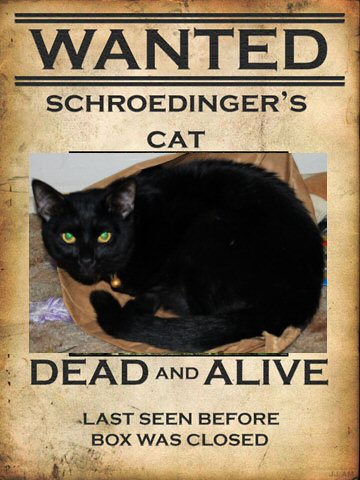In 1935, Erwin Schrodinger came up with the Cat Paradox. The principle behind this paradox is that a cat can be alive and dead at the same time, though his explanation delves into a deeper understanding of physics. People are supposed to question when quantum superposition ends and reality reaches one of two possibilities.
What is Quantum Superposition?
To understand the Cat Paradox, one must first have a basic understanding of quantum superposition. Quantum superposition is the belief that a particle is able to exist in different states, even partially, at the same time, though only in its quantum state. The human mind is not capable of viewing items in their quantum state, meaning that when someone observes an item, only one of the potential states is seen.
An example of this took place in California where University of California scientists discovered that a tiny strip of metal could move and not move at the same time. Viewing it is impossible, however, because this only exists in a quantum state.

Schrodinger’s Cat Paradox
With the Cat Paradox, Schrodinger stated that a cat could, in theory, exist in both an alive and dead state. The basic premise involves placing a cat in a steel box containing a Geiger counter, a hammer, radioactive material, and a vial of poison.
Should the Geiger counter go off after detecting the radioactive material, the hammer falls and smashes the vial of poison, thus killing the cat, logically. The issue is that until someone actually opens the box and sees the dead cat, there is no proof that the cat is really dead. It takes the act of observation to prove the occurrence of death.
Until that box is opened, there are multiple possibilities that could exist with Schrodinger’s Cat Paradox. Predicting the cat is either alive or dead makes you correct. Predicting the cat is dead isn’t correct: the cat could have survived the poison, the hammer might not have fallen, or the Geiger counter may have failed.
Lesson Learned
One thing that physicists learned is that tiny particles do not always follow Newton’s Laws. Electrons and protons follow a wave function, and that takes the different states of these particles into consideration. Energy, momentum, and position all impact a particle’s movement. You can really only know how fast a particle is moving or where it is when you observe it. The bottom line is that there is no guaranteed knowledge without observation.
About Erwin Schrodinger
Born in 1887, Erwin Schrodinger’s mother was a chemistry professor at the Technical College of Vienna. Schrodinger had various interests, leading him to eventually study chemistry, Italian art, and botany at the University of Vienna. There, physics became his passion. During WWI, Schrodinger served as an artillery officer.
After the stint in the military, he took various teaching jobs, including a six-year position at the University of Zurich. One of his most passionate subjects during this time was theoretical physics. Schrodinger went on to win a Nobel Prize for his work in quantum mechanics and he eventually became the director at the School for Theoretic Physics at Advanced Studies in Dublin, Ireland.
Byline
Kip Zachary is a freelance writer based in New Orleans, LA. Kip focuses on science, futuristic technology, AI, gadgets, computers, mobile phones, tablets, accessories such as kensington ipad keyboard case, laptops and other like subjects.
Image credit goes to tim_curryfan.










Comments are closed.